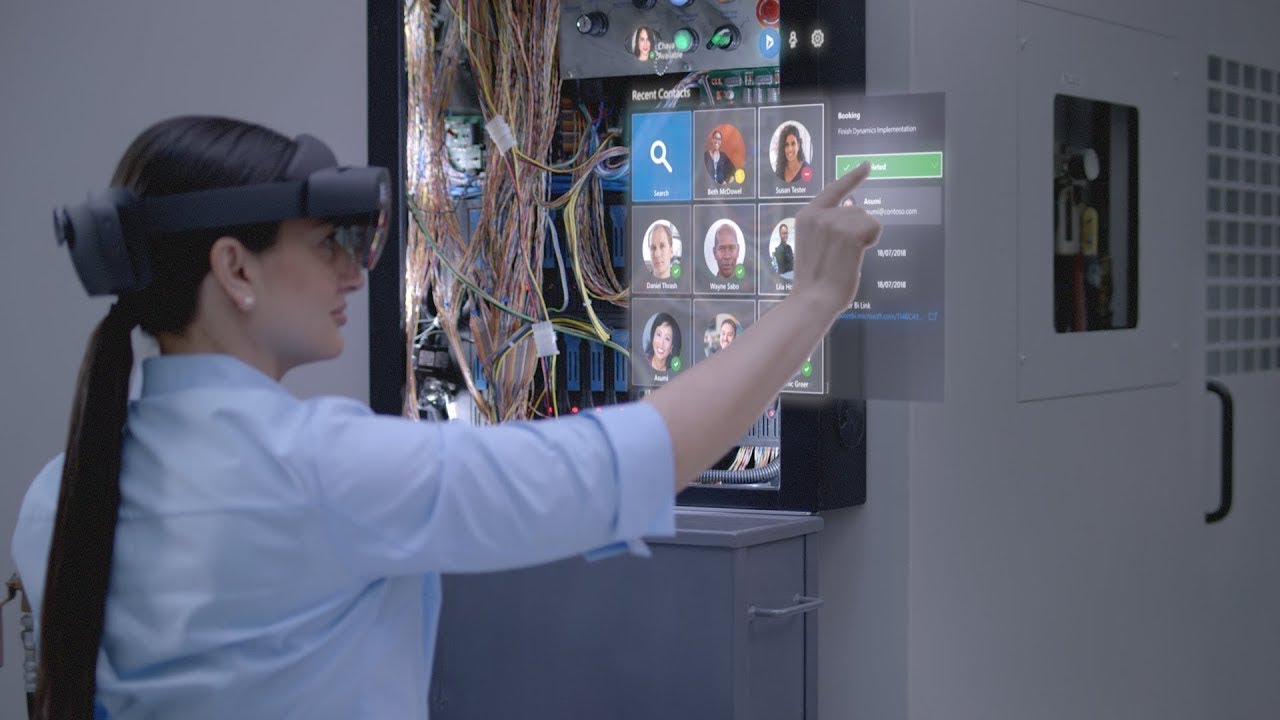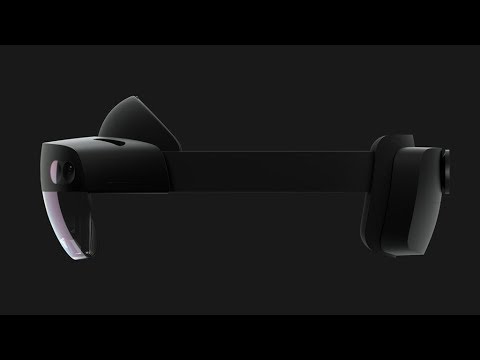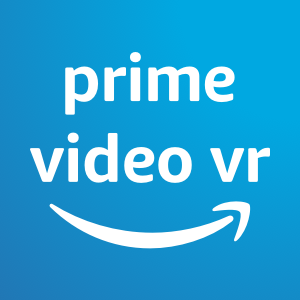Transparent Design
Microsoft has dubbed the HoloLens 2 a "Mixed Reality" headset, but the term is a little misleading. This is essentially augmented reality: the headset has a pair of transparent lenses into which the device's onboard computer — which is stored at the back — projects virtual images. The device lacks VR capabilities because of its narrow field of view and inability to display fully opaque objects. However, much of the technology behind the platform is comparable to — and vastly improves upon — that found in the Quest 2 and current smartphone AR.
The device can understand your surroundings and place these objects within the context of your environment, similar to Apple's AR kit or Google's AR Core, for example. Virtual tables can attach to the real-world floor, or empty surfaces can accommodate scale models. The HoloLens 2 has a 1-megapixel Time-of-Flight depth sensor, which improves the accuracy of the anchoring and also allows for hand-tracking, which Quest users will be familiar with. It also includes features we'd like to see in more affordable headsets, such as eye tracking via two infrared cameras. This is a technological buffet with a little of everything.
Making AR A Cosy Fit
Anyone that wore the original HoloLens for more than a minute knew just how uncomfortable the headset could get. It was heavy and pinched my nose, making it hard to have it on for a long time. Improving comfort was of huge importance to Microsoft for its follow-up and, I have to say, they more than pulled it off. The device weighs in at 566 grams, which is almost exactly the same weight as the Oculus Quest 1 and about 70 grams heavier than Quest 2.
However, by storing much of its computer at the back of the device alongside the dial for the head strap, HoloLens 2 feels far more comfortable than almost any VR headset I’ve used. A brow pad perfectly cushions the device on my forehead, leaving an enough space that it doesn’t even really rest on my nose at all. That story will be different for everyone, of course, but of the people I know that have tried the device, basically no one has complained about comfort. You’re even able instantly flip the visor upward, removing the lenses from sight when necessary, and the back dial paired with the top strap means finding the right fit for you takes just a few seconds. This is, of course, still an incredibly bulky and awkward-looking piece of kit that you wouldn’t dream of wearing outside, but when I first tired HoloLens 2 in 2019 I said it was an AR headset so comfortable that I could actually see myself using it every day (at least indoors). Having now had that opportunity, that holds true.
Magic Right In Front Of Your Eyes
HoloLens 2’s lenses are transparent, but not fully, so the view is a little darker than the actual world. The virtual objects displayed aren’t fully opaque–Microsoft calls them holograms. That said, they’re anchored solidly in place and feel believable. There’s no denying the magic of experiencing head-worn AR for the first time. Even the kit’s introductory Tips app proves to be a moreish treat, showing a virtual hummingbird that flutters about as if it really is there.
Unlike VR, which is — in its current form — mostly preoccupied with games and entertainment, HoloLens 2 shows you why AR has such remarkable potential for productivity and education. With the headset’s new collaborative platform, Microsoft Mesh, I’m able to host meetings with other people that have genuine, tangible advantages over web calls, social VR platforms and physical meetings. We can pass around 3D assets and renders, for example, using incredibly intuitive hand-tracking with pinch and grab gestures. But, if I need to access my phone, PC, or grab something from another room then HoloLens 2 doesn’t require me to remove the headset like VR would. Removing barriers like this might seem superficial, but in practice it's anything but, and shows how AR can be a truly useful tool. Reaching out and grabbing these images often works well, too.
Thanks to its depth-sensor, HoloLens 2’s hand-tracking is incredibly solid–far more so than what’s currently on offer with the Quest 2. Simply pinching a 3D asset will let you grab it and move it with your hand, and you can use the ‘Air Tap’ with your thumb and index finger, paired with pointers, to manipulate objects and windows from afar. I had very little issue with these sorts of gestures, but there are some caveats we’ll get too soon.
You can also basically voice operate the device by bringing up a pointer to look at options and then speaking to select them.Meanwhile, using Microsoft Edge, Photos and Firefox Reality, I can place browser and playback apps around physical space, not as tabs but as whole-other screens that anchor to a space and are ready to just reach out and touch. No smartphone-style app juggling–everything you need can be laid out right in front of you. Concepts like these are undoubtedly going to play a big part in AR’s future but, with HoloLens 2, you can already get a taste of it.
Illusions Revealed
Unless you’re standing at a distance, the images you’re viewing inside of HoloLens 2 will probably cut off by restrictive borders that are a real pain to work with. It is, without a doubt, the headset’s biggest flaw and the primary reason that, as impressive as it is, HoloLens 2 doesn’t feel ready for mass adoption.Interacting with this another world can also be a bit of a mixed bag.
Yes, hand-tracking is mostly dependable but, paired with the limited FOV it can make interacting with apps a hassle. It isn’t 1:1, which makes interactions feel sluggish compared to the responsiveness of a PC or VR controller, and it also struggles with occlusion and the tracking’s field of view. Take the browser, for example. If I want to interact with a webpage, I want to bring the screen close to me so I’m not reaching out too far every time I want to select something. But doing that cuts off half the page from view, meaning I need to anchor my neck to scroll up and down the field of view.
It makes web-browsing much more strenuous and sluggish than it is with a keyboard and mouse. That may speak more to the need to redesign the web for AR than AR’s need to accommodate current formats, but it’s still a problem in the here and now. Typing on the virtual keyboard can only be done with your index fingers, which slows web-browsing considerably (though Bluetooth keyboard and mouse support included), and it also means you’ll be tracking your hands as you use other devices which, as I write this review on my laptop, I’m learning can be troublesome (though, again, you can just flick the visor away in an instant).
Battery life, meanwhile, varies. You could keep the device on your head and only use it intermittently for about three hours of life, but constant use in something like Mesh will bring that crashing down to around the two-hour mark if not less. Elsewhere, you’ll notice some screen hitches from time to time, be it momentary distortion inside the lenses or jitters in image placement. Sometimes I’d select apps and the device would unexpectedly restart and, on the unit I was using I also noticed some lag when trying to scroll through the Microsoft Store or use browser apps.
Windows 10
HoloLens 2 essentially runs on Windows 10. If you’ve used one window VR headsets like the HP Reverb G2 (which is also labelled ‘Mixed Reality’), you’ll be familiar with the layout–a home window gets you to your different apps and the Microsoft Store to download new ones. Touching your wrist below your palm brings up the menu where you can access your library of content.
This is where it’s perhaps most important to remember the market they designed HoloLens 2 for and why it exists. Most of the HoloLens customers out there are using it for a specific purpose, not as an all-in-one entertainment and work device. There isn’t much to actually ‘do’ inside HoloLens 2, but it isn’t really fair to judge it on that criteria, because that isn’t what it’s here for.
Almost everything on the device is a proof-of-concept tech demo or an enterprise application that requires approval properly access.
There are several other educational apps in this vein and, if you are interested in gaming, there’s a short little puzzler that requires you to guide a robot around a level, interacting with different elements, though nothing on the scale of the Minecraft cross-play support we saw at E3 years ago. That said, HoloLens 2 is as much about software evolution as it is hardware, and that’s where Microsoft Mesh comes in. Mesh is a framework for building shared AR experiences that can also be cross-platform, working with VR headsets and PCs/smartphones too.
Right now Microsoft’s own Mesh preview app is the only place to experience it but it really is an impressive thing and feels like you’re inviting people into your own home to socialize and collaborate with. Once developers really start using the platform for apps designed for the mass market, HoloLens itself will become a much more interesting platform.
Conclusion
Microsoft’s HoloLens 2 is a proof-of-concept device that sows the seeds for a revolution, if not launching one off of its own back. Even as an enterprise-only device free from the demands of consumer perfection, the headset’s limited field of view and imperfect interaction give it a distinctly experimental feel. Many of the things you’ve dreamed of doing with AR, from remote work meetups via Mesh to virtual, TV-less video playback are possible inside this headset, but implementation is often primitive, buggy and restricted, not because Microsoft has done a bad job realizing its vision so much as it is wrestling with what’s possible with current breakthroughs.
But consider they really designed what the HoloLens 2 to do: it's not an all-day wearable that seamlessly transitions from work to play. It's frequently sold directly to businesses for specific, and it's most likely used in 10-to-20-minute bursts. As specific as that may be, nothing else comes close to the feature set of the HoloLens 2. In HoloLens 2, we get a glimpse of the technology that will make AR a truly viable new medium, but it will be a long time before it fully realized. Microsoft will be grateful for the head start when it finally arrives.

You should also check out the following articles:
- VR BUYING GUIDE AND THE BEST VR HEADSET FOR 2022
- A meta market opportunity: The metaverse could soon be worth $1 trillion
- Facebook wants to build a metaverse. Microsoft is creating something even more ambitious.
- How to succeed in the virtual reality world of tomorrow?
- Books you must read about virtual reality
- Best New Augmented Reality Books To Read In 2021
- US$ 4.7 Billion- The global augmented reality gaming market
- The smart glasses revolution is about to get real
- Consumer Brands Reinventing Marketing in the Metaverse
- Imagine Making Money in Rec Room
- The biggest AR and VR predictions of 2022
- Apple hired Meta's AR communications lead ahead of the 2022 launch of the headset.
- Who Will Be in Charge of the Metaverse?
- The Kingdom of Abraham: The first Jewish metaverse
- Gen Z are planning to spend thousands on cryptocurrency, NFTs and metaverse
- According to Goldman Sachs, the metaverse must run on blockchain
- What You Can Create With a Small Piece of Land in the Metaverse
- How To Buy Land In The Metaverse?










